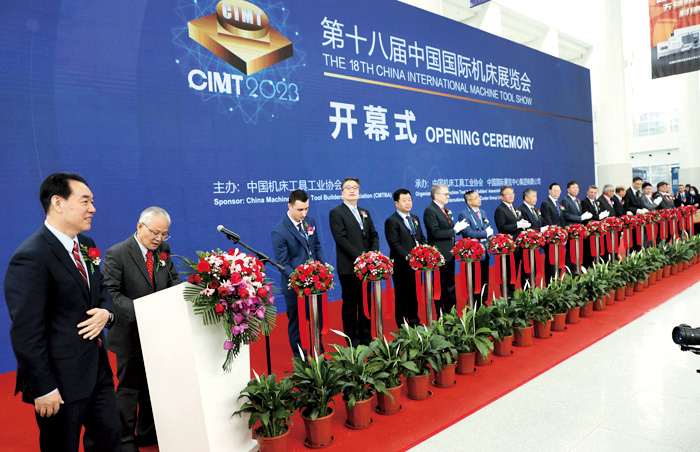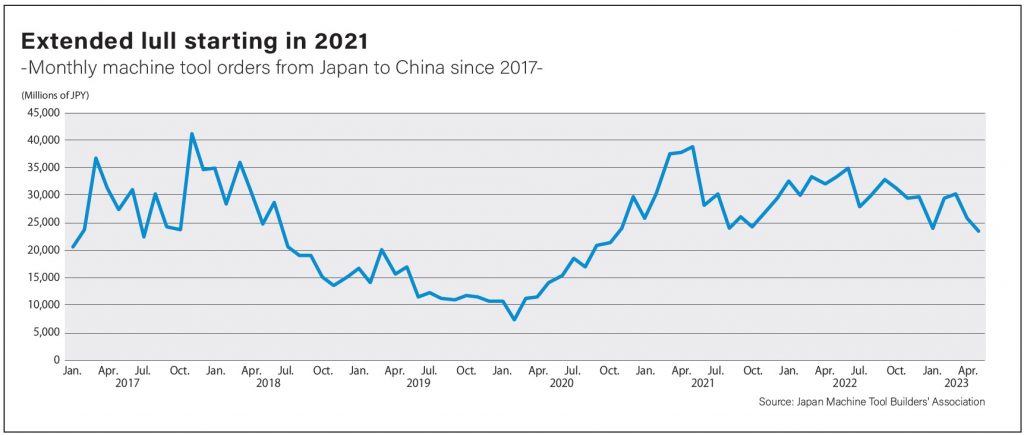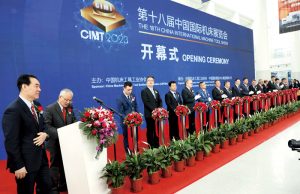
- News
- Basics
- Products
- JP Job shop
- Exhibition
- Interview
- Statistic
- PR
- Download
- Special contents
Statistic
August 18, 2023

China is the largest export destination for the Japanese machine tool industry, which quickly recovered from the losses suffered due to COVID-19 in 2020. However, the market has been in a “plateau” state, neither favorable nor unfavorable, since mid-2021, when capital investment in electrical and precision equipment began to slow. Since Russia’s invasion of Ukraine, the country has been widely viewed as a country of high geopolitical risk, making market trends even more difficult to discern. While some industries remain strong, many industry insiders believe the key to the Chinese market’s recovery lies in the semiconductor and electrical/precision industries.
China has a population of about 1.4 billion. According to a United Nations survey conducted this year, China has lost the top spot in terms of population to India, but it remains one of the world’s largest economies, ranking second in terms of nominal gross domestic product (GDP) after the U.S. The IMF’s World Economic Outlook, released in April 2023, forecasts a real GDP growth rate of 5.2% this year, one of the highest in the world, making it a country with high expectations.
Known as “the world’s factory,” manufacturers from a wide range of industries around the world have their production facilities in China. Demand for machine tools is also high, and for years the country has led the world in both consumption and production. According to a study by Gardner Intelligence, a U.S. publisher, China’s consumption of machine tools (cutting + forming) was $27.41 billion in 2022, down 9.3% from the previous year. Production in the same year was $27.1 billion, down 2.9%. Both of these were almost three times higher than the second and lower ranked country. At $6.6 billion, down 12% from the previous year, imports were also the largest in the world.

According to the Japan Machine Tool Builders’ Association (JMTBA), orders from China bottomed out in February 2020 during the pandemic and continued to recover until May 2021. Dr. Yoshiharu Inaba, chairman of Fanuc who also serves as chairman of the JMTBA, analyzed at the time, “All industries in China are on a recovery trend. In particular, as work from home has become more popular, the IT-related sector, which reflects the demand for remote work such as PCs, tablets and smartphones, and the electrical and precision sector, including semiconductor-related sectors, are driving the recovery“.
Since then, however, the demand for remote work has run its course and there is a noticeable lull in the electrical/precision sector. On the other hand, demand for electric vehicles (EVs) has become more active during this period, and infrastructure and construction equipment have recovered.
“Strong capital investment by EV manufacturers and parts suppliers continued,” Okuma said in its main financial results for the fiscal year ended March 2023. “As a result, demand for molds, injection molding machines, presses, hydraulic parts and other related industries also expanded. Demand from high-tech industries remained firm, demand from wind power-related industries expanded from the second half of the fiscal year, and construction machinery is also on a recovery path,” the company noted.
DMG MORI also clarified in its Q1 FY12/2023 financial results, announced in May 2023, that “orders from China increased by 33% YoY, reaching a record high on a quarterly basis“. The company pointed to the resumption of economic activity following the end of the anti-COVID policy which was implemented by the Chinese government until the end of last year to restrict economic activity during the spread of COVID-19, as the main reason for the increase.
Other manufacturers with strengths in medium and large machinery, such as Okamoto Machine Tool Works and Shibaura Machine, also appear to be responding well to infrastructure-related projects, particularly EV-related businesses and wind power generation.
According to the JMTBA, orders received from China declined YoY for five consecutive months from January to May this year, and the total amount of orders received from January to May this year was 132.898 billion yen, down 17.6% YoY. The overall performance of the industry has not suffered a major collapse, as some solid industries have supported the bottom line.

CIMT2023 was a great success with a record number of visitors, but not enough to stimulate active business. (CIMT official photo)
The 18th China International Machine Tool Exhibition (CIMT 2023) was held in Beijing in April this year. The number of visitors reached 154,957, up 27.0% from the previous show, surpassing the 2019 exhibition and setting a new record.
However, despite the large number of visitors, the actual deal-making seemed subdued. An executive from a Japanese manufacturer who exhibited at the show said, “The business culture of machine tools in China often requires advance payment. Therefore, even those customers who had work in hand were worried about whether there would be work in a few months when the machines were actually delivered, and they seemed to have a cautious and wait-and-see attitude”.
With so many uncertainties in the global economy, China’s market trends are even more difficult to discern due to its close relationship with Russia and its conflict with the United States.
In this environment, the electrical and precision industries, especially the IT-related sectors, are expected to recover. However, at JMTBA’s monthly press conference held in June of this year, Chairman Dr. Inaba stated, “EV-related investment is active, and many plans are underway behind the scenes. However, other sectors such as automobiles, semiconductors, and construction machinery have begun to slow down, and the IT-related sector is facing a difficult period that may continue until the economy picks up significantly”.
When interviewed at a Japanese machine tool industry meeting, people said, “At the beginning of the year, we thought that the electrical and precision sectors in China would start to accelerate this summer, but it seems that it might be after the fall. It might even happen after the New Year”.
It seems that it will take some time for this vague feeling of stagnation in the Chinese market to be dispelled and for the market to break out of its plateau.